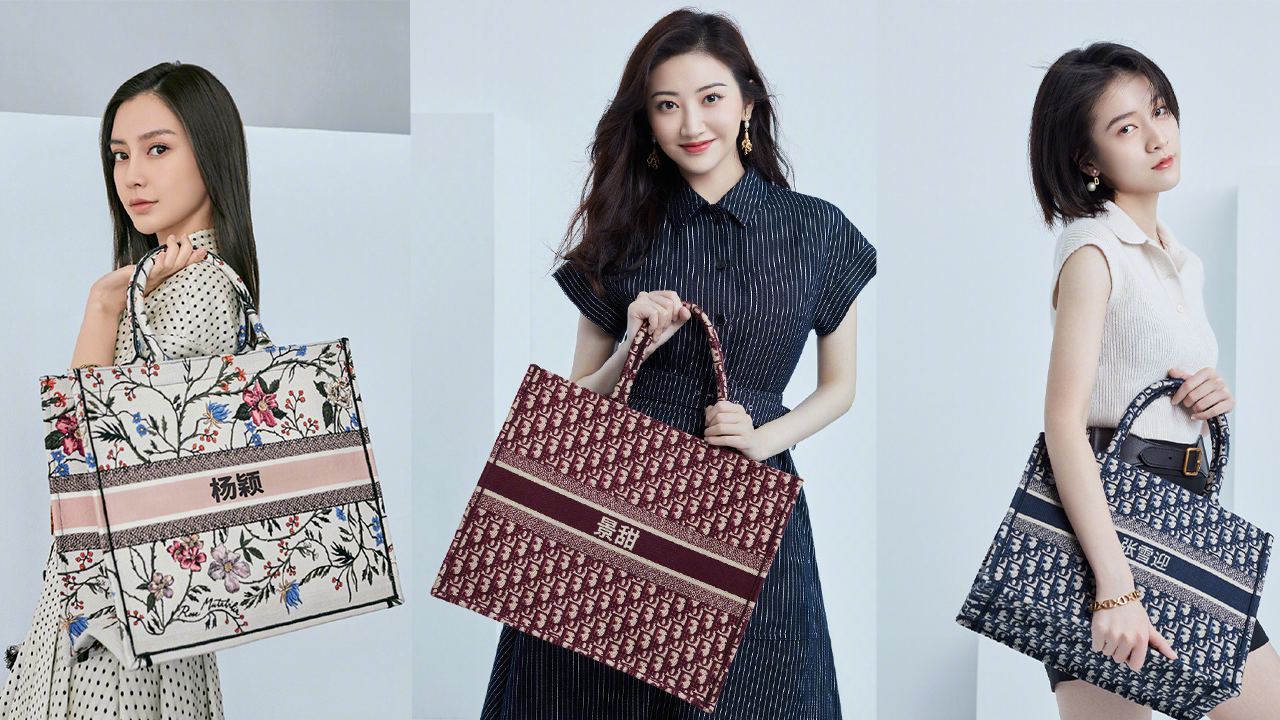Dior’s iconic Book Tote and Diorcamp handbags have been hugely popular with Chinese luxury consumers since they debuted in 2018, with “ABCDior” stitched across the front of each bag in English. The French fashion house has now released a new, limited edition available between May 1-31, though this time with the ability to add a touch of personalization—the addition of Chinese characters. However, the response from Chinese neizens has been less than positive. They thought the typeface, Source Han Sans, which was invented by Adobe and Google and not a design firm, felt “old-fashioned,” “weird,” and “feeling like a gimmick to win local consumers.”
Despite featuring celebrity endorsements from brand ambassador, Angelababy, as well as actresses Jing Tian, Zhang Xueying, and Wu Jinyan, the digital campaign failed to resonate with Chinese digital natives. Many thought the Chinese characters, stitched across the front of the Book Tote in this font, made the bag not only look cheap, but also like a counterfeit of the original.
The Jing Take
There’s a fine line between a smart localization strategy and a flattering gimmick that can reveal a Western brand’s understanding — or misunderstanding — of Chinese culture. In particular, the Chinese character is a delicate element for luxury brands to play with. True, many streetwear brands have designed with Chinese characters, but using playful, vibrant, and funky fonts that felt true to the brands' identity and created an appealing mood. This was not the case for Dior’s Book Tote and Diorcamp bags, which were previously well-received by Chinese customers when they were personalized with English letters. For luxury brands, it's another reminder of the importance of understanding Chinese consumers’ appetites, though it’s always a challenge to meet, or even exceed, regional preferences.
The Jing Take reports on a leading piece of news while presenting our editorial team’s analysis of its key implications for the luxury industry. In this recurring column, we analyze everything from product drops and mergers to heated debates that sprout up on Chinese social media.

